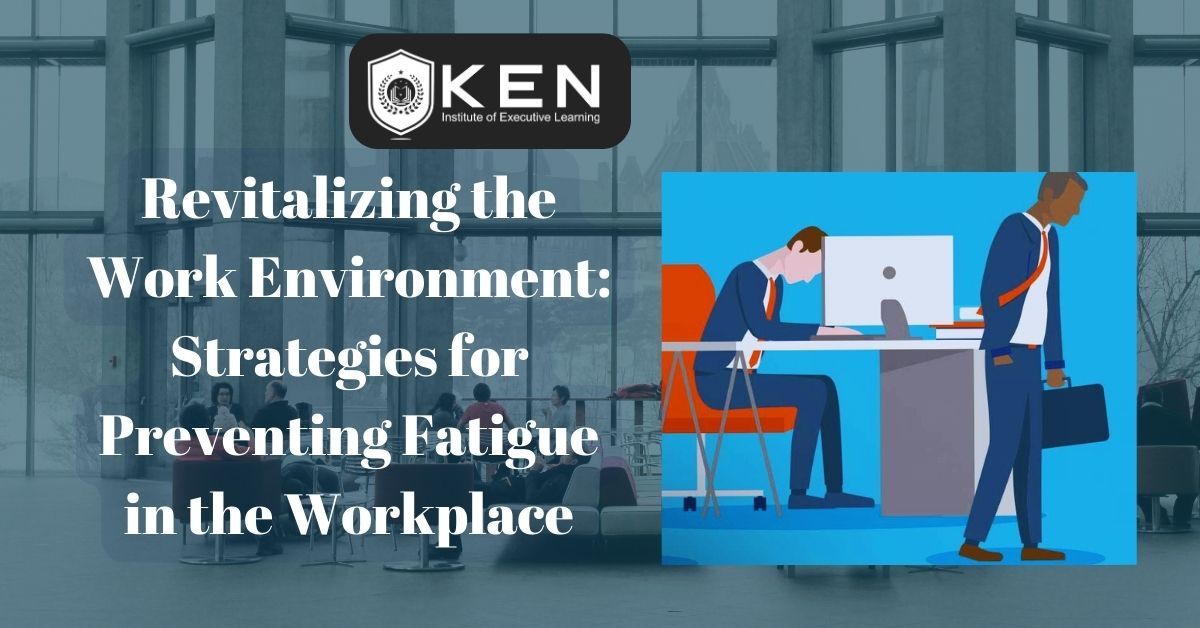
In today’s fast-paced and demanding work culture, the battle against fatigue has become a significant challenge for both employers and employees. “Fatigue in the Workplace” not only affects productivity but can also lead to serious health issues and a decline in overall well-being.
In recent decades, fatigue-related accidents and injuries have been increasingly subject to regulatory scrutiny and many developed countries have now identified fatigue as a workplace hazard. In general, three clear lines of evidence have associated increasing levels of fatigue in the workplace with decrements in cognitive function:
1) impaired task performance,
2) increases in error and accident rates, and
3) ultimately, reduced safety.

Causes of Workplace Fatigue:
To plan the prevention strategies, it’s crucial to understand the root causes of workplace fatigue. Common factors include:
- long working hours
- insufficient breaks
- inadequate sleep
- high-stress levels
- poor work-life balance
Understanding these elements enables organizations to mitigate fatigue.
Here, we will explore effective strategies to prevent fatigue in the workplace, creating an environment that fosters employee well-being and sustained productivity.
10 aspects of Planning Strategy for Preventing Fatigue in the Workplace
1. Encourage Adequate Rest and Sleep
The highest contributor to workplace fatigue is insufficient sleep. Encouraging employees to prioritize sleep by setting realistic deadlines and respecting their personal time can significantly impact their overall well-being. Employers can provide resources on proper sleep hygiene and educate staff on the importance of restful sleep for cognitive function and overall health.
2. Promote Healthy Lifestyle Choices
Physical activity and a balanced diet play a crucial role in combating fatigue. Employers can encourage employees to incorporate regular exercise into their routines, whether through on-site fitness programs, gym subsidies, or wellness challenges. Additionally, providing healthy snack options in the workplace can contribute to sustained energy levels and improved concentration.

3. Implement Flexible Work Arrangements
Flexibility in work arrangements, such as remote work options or flexible hours, can empower employees to better manage their schedules. This flexibility allows individuals to align their work with their natural energy peaks, reducing the likelihood of burnout and fatigue in the workplace. Clear communication and collaboration tools are essential for maintaining productivity in flexible work environments.
4. Facilitate Regular Breaks
Short breaks throughout the workday are essential for preventing mental and physical fatigue. Encourage employees to take short walks, practice mindfulness, or engage in activities that help them recharge. Employers can create designated break areas and establish a culture that values and supports taking breaks, emphasizing that it contributes to enhanced productivity and well-being.
5. Address Workplace Stress
Stress is one of the major contributors to fatigue in the workplace. Employers should actively work to create a positive and supportive work environment. Implementing stress management programs, providing access to counselling services, and fostering open communication can help employees cope with and alleviate stress.
6. Invest in Ergonomics
Physical fatigue often stems from poor workplace ergonomics. Ensuring that workstations are properly set up, providing ergonomic furniture, and encouraging employees to take advantage of ergonomic assessments can prevent musculoskeletal issues and enhance overall comfort, reducing physical fatigue.

7. Promote a Healthy Work-Life Balance
A healthy work-life balance is crucial for preventing burnout and fatigue. Employers can set clear expectations regarding working hours, discourage overtime when unnecessary, and foster a culture that values personal time. Encouraging employees to use their vacation days and promoting boundaries between work and personal life contributes to long-term well-being.
8. Provide Training on Time Management
Time management skills are crucial for preventing fatigue in the workplace. Employers can offer training programs to help employees prioritize tasks, set realistic deadlines, and manage their workload effectively. This not only enhances productivity but also reduces the stress associated with tight deadlines and overwhelming workloads.

9. Encourage Social Connection
A strong social support system can significantly impact an employee’s well-being. Encouraging team-building activities, creating social spaces within the workplace, and fostering a sense of community can help combat feelings of isolation and contribute to a positive work environment.
10. Regularly Assess Workload
Periodic assessments of individual and team workloads are essential to prevent burnout. Managers should be attentive to signs of excessive workload and be ready to redistribute tasks or provide additional resources when necessary. Open communication channels between employees and management can help identify and address workload concerns promptly.
Nowadays a days Vernal’s Idea Of Strategies is introduced for further reducing fatigue-related risk in the workplace, that is:
In contrast to the risk reduction achieved by reducing the likelihood an individual will be working while fatigued (e.g., by restricting hours of work), fatigue-proofing strategies are adaptive and protective risk-reduction behaviors that improve the resilience of a system of work. They increase the likelihood that a fatigue-related error will be detected and not translate into an accident or injury, thus reducing vulnerability to fatigue-related error.

This is of particular relevance to organizations where fatigue is difficult to manage using reductions in working hours due to operational circumstances, or the paradoxical consequences for overall safety associated with reduced working hours.
Conclusion
Preventing fatigue in the workplace requires a multifaceted approach that addresses the physical, mental, and environmental factors contributing to exhaustion. By prioritizing employee well-being and implementing strategies that promote a healthy work-life balance, organizations can create a positive and energizing work environment, ultimately leading to increased productivity and job satisfaction.
To stay fit and to work in a safe, healthy environment is the fundamental right of every worker, for top-level safety training, more advice on OHSE or any personalized information get in touch with us at: info@keneducation.in
Let’s connect on Facebook, YouTube, LinkedIn & Instagram

